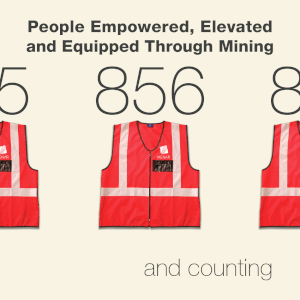Mirna Fahmy – Diplomatic Inside
The emerging influence of October 7 after the attack is gaining dominance, promising to alter the dynamics of the region significantly, including the fate of the Palestinians.
By evidence, narrations, and reporting, the intent of Hamas’ influence to take over Palestine and evict the power of Israel is no longer witnessed because Israel has killed many leaders and fighters of Hamas and Hezbollah. The support that Hamas reaped at the beginning of the Israeli-Hamas war is no longer at its peak.
A poll, conducted in early September by the Palestinian Centre for Policy and Survey Research (PSR), found that 57% of people surveyed in the Gaza Strip said the decision to launch the offensive was incorrect, while 39% said it was correct. That was much lower in comparison with a previous poll that was carried out in June showing that 57% of respondents in Gaza thought the decision to be correct.
Coming near to a year for this attack, the loss is huge to both sides in terms of deaths and casualties. More than 41,000 Palestinians have been killed by the Israeli military offensive that has laid waste to the Gaza Strip since last October, according to the Gaza health ministry. Israel’s total casualty count is 1,410 killed. Of these, 1,139 were killed in the October 7 attacks, in reference to Israeli tallies. On 1 December, around 1,332 Israelis had been killed since 7 October (inclusive), including 395 IDF soldiers, 10 Shin Bet agents, and 59 police officers, and at least 1,271 have been wounded.
To not repeat such wasting, draining, and killing battles, Israel is keen to draw borders to the movements of Palestinians within its territories, especially those in Gaza and the West Bank. Since Israel’s establishment in 1948, the country has never been free from Palestinians. They were phrased as Arabs since they are still living on their lands but under Israel’s authority. The people of the cities that are under the Palestinian authority, like Ramallah, Gaza, and Beit Lethem, are labelled Palestinians.
In Israel proper, Palestinians constitute almost 21 percent of the population as part of its Arab citizens. They are around 2,037,000. They are permitted to vote for the Israeli Knesset if they are holding Israeli citizenship. In fact, the first Arab Knesset members were Amin-Salim Jarjora and Seif el-Din el-Zoubi, who were members of the Democratic List of Nazareth party, and Tawfik Toubi, a member of the Maki party. Now in 2024, they are around 10 members, whereas Mansour Abbas is currently the leader of the United Arab List and represents the party in the Knesset.
The expel:
After the October 7 attack, Prime Minister Benjamin Netanyahu has eventually decided to replace 200,000 Palestinians in the West Bank in labour, especially in construction with Indians. These workers make up 22% of the West Bank workforce, and their income is vital to the local economy. Their wage is usually around 10,000 shekels ($2,700). The Israeli government signed a contract with the Indian government to import around 10, 000 Indian workers in the construction sector with a lower wage of around $1,500. So far, 4,800 Indians have travelled to Israel in recent months. The Economic Times quoted a source saying that they prefer Indians as they would bring less problems in comparison with the Palestinians, who started chaos in response to Hamas’ October 7 attack.
Five days after the start of the war between Israel and Gaza’s Hamas rulers, France 24 reported residents in the West Bank saying dozens of Israelis turned up at the village and gave them an hour to leave their land, among them settlers, soldiers, and police.
Before the war, in early 2023, about 4,000 Palestinians were displaced due to policies and practices implemented by the Israeli authorities or Israeli settlers, all contributing to a coercive environment in the West Bank, according to the United Nations Office for the Coordination of Humanitarian Affairs (OCHA).
The Palestinian Settlement Wall Resistance Committee says, “The month of April 2024 witnessed a dangerous escalation in the number of attacks by the army and volunteers, reaching 1,242 attacks in one month.”
According to the report of the government body, the movement carried out 895 attacks, and with regard to the perpetrators of the Solidarity Movement, 347 attacks were carried out in Nablus, Lille, and Ramallah governorates.
In late August 2024, the United Nations Human Rights Office issued a press statement condemning the increased military response by Israeli security forces in the occupied West Bank, in violation of international law, and threatening to further inflame an already volatile situation.
The UN News report pointed out that the Israeli military attacks resulted in widespread destruction and huge human losses in the West Bank camps, noting that the Palestinians in the West Bank live in a state of “constant fear,” warning that the continuation of this situation could lead to a dangerous escalation of the conflict, complicating crisis management efforts.
Judea and Samaria are the most West Bank regions where Palestinian enclaves are being demolished.
Where to?
The fate of the Palestinians in Gaza has not been determined. But to Netanyahu, Gaza itself won’t be handed to the Palestinian authority, and it would be under the Israeli troop administration to prevent Hamas’s smugglings. This infuriated Egypt, issuing a statement that “Egypt won’t deal with Israel until the Philadelphia corridor is again under Palestine.” Most of the people live in shelters or either fled through Rafah crossing to Egypt or any other countries, according to many reports. There has been a swirling notion that the expulsion of the Palestinians of the West Bank might be pressured on Jordan as over half the population is Palestinian.
At the beginning of Israel’s retaliation, both Jordan’s King Abdullah and Egypt’s president Abdel Fattah El-Sisi have elaborated that they won’t accept Palestinians in either Jordan or Sinai, even temporarily, because this will disclose the Palestinian cause forever.
Israeli social media figures, politicians, scholars, and journalists who are explicitly supporting the wars on Hamas, Hezbollah, Houthis, and Iran on X have been spreading words like “the right land for the Palestinians is Jordan.” They even posted that historically there has been no country called Jordan, and that is a newly established state by the British when this area was still a British mandatory. The purpose of its establishment, as they explain, is to create chaos within the region, especially in Israel.
In a map presentation about Gaza that Netanyahu demonstrated in a press conference in Jerusalem, he showed a map of many cities in Israel, including Gaza, and pointed out what they did so far from Hamas’s cleansing. The map stirred the air waves because the West Bank wasn’t marked on the map. As usual, Netanyahu covered it up that he didn’t include the Dead Sea, the Jordan River, and the Sea of Galilee when a reporter asked him.
He even added, “I didn’t get into that. I was talking about Gaza. There is a whole issue of how to achieve peace between us and the Palestinians in Judea and Samaria. I didn’t get into that.”
More concerns escalated when he showed a bigger map of the Middle East without highlighting that the Western Sahara is part of Morocco, though many countries have recognised the desert to be officially part of Morocco.
The United Nations General Assembly has revealed that they are adapting a draft resolution demanding Israel to end its illegal presence in the occupied Palestinian territories within 12 months.
Despite any calls, suggestions, warrant arrests, and warnings, nothing is intercepting Israel from achieving what they vow to demolish. After the pagers’ blasts killing many Hezbollah operatives in Lebanon, Netanyahu said in a TV speech that “the click of a button can bring down a nation to their knees very rapidly if you desire because every system can be hacked. Our aeroplanes, cars, data banks, and hospitals can be hacked. There are also possibilities of sabotage and worse.”
More to that, he added that “we have only just begun; we are going to change the Middle East.”
On the scene, everyone is eagerly awaiting the transformative changes that may soon sweep through the region.


